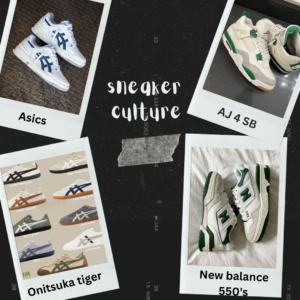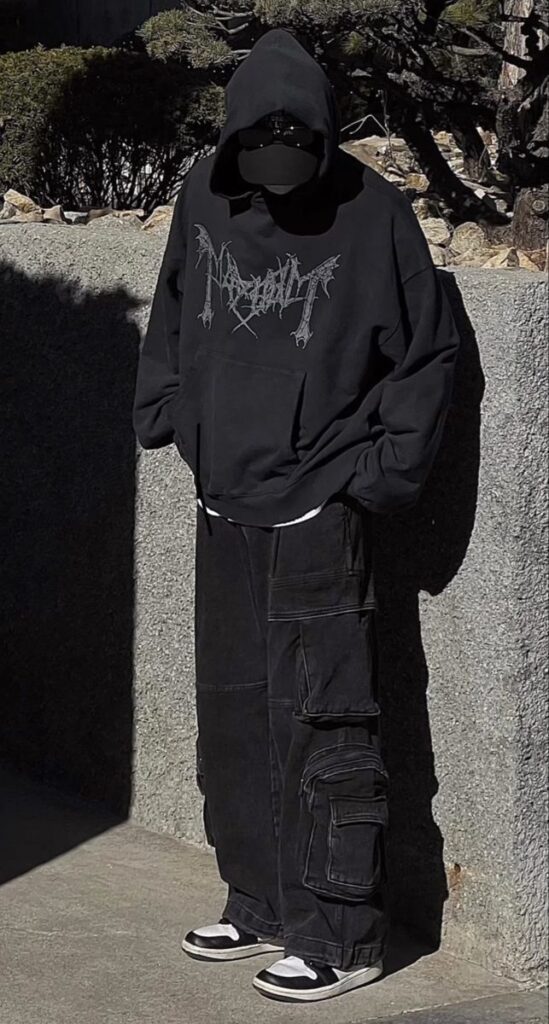
Japanese Streetwear Culture
Japanese streetwear is an illustration of the the nation’s varied cultural tapestry and its influence on global fashion trends, from the rise of techwear to the prominent brands like BAPE. Japanese street style is a cultural phenomenon that has drawn interest from audiences from all over the world, and it goes above being simply a trend in fashion. It is now recognized for its creativity, creative skills, and authenticity.
History of Japanese Streetwear
Japanese streetwear began to take form in the 1980s and 1990s when skating and the culture of hip-hop initiated making an

effect on adolescents in Japan. The aesthetic gained popularity in the 1990s after Nigo launched products like A Bathing Ape (BAPE)
in 1993. Originally known for its vibrant camouflage creates, shark hoodies, and relationships with global prominent individuals, BAPE quickly came to signify a blend of Japanese streetwear’s native and internationally components as well.
At the same time, Japanese street fashion trends begun expanding in regions like Harajuku. Harajuku evolved became an important hub for experimental fashion, in which individuals utilized unique blends between contemporary and traditional Japanese clothing to convey what their identities represented. The large and diverse streetwear scene which Japan is known for today was created accessible from this melting pot of ethnicities.
Sneakers’ Role in Japanese Streetwear
Sneakers are vital to the Japanese streetwear culture. Japanese sneaker culture is renowned for its
excellent craftsmanship, distinctiveness, and dedication to detail. To be able to get rare pairs of exclusive sneakers from major global companies like Nike, Adidas, and New Balance, Japanese sneakerheads usually go to tremendous lengths
In the sneaker marketplace, Japanese companies additionally have established themselves. For example, ASICS and Onitsuka Tiger are both favorites in the performance and relaxation footwear categories. These companies are gaining recognition worldwide through collaborations with designers and streetwear stars. With its own unique star symbol and attractive colorways, BAPE’s Bapesta sneaker is an excellent representation of how Japanese streetwear updates conventional silhouettes to create something totally unique.
Japanese Techwear: Fashion Meets Functionality
Japan has grown into a natural home for the new streetwear subgenre referred to as techwear. Japanese techwear, that blends futuristic design with utility, symbolizes the country’s love of innovation. Established businesses in this industry include Snow Peak, White Mountaineering, and ACRONYM, offering stylish yet highly practical attire.
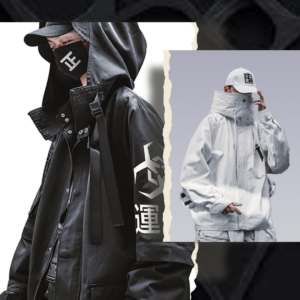
Contemporary fabrics like Gore-Tex and Dyneema are commonly employed in Japanese techwear for their weather resistance and life expectancy. With its adjustable features, hiding pockets, and modular components, these apparel items are constructed with an eye on versatility. The finished outcome is clothes with a sleek, minimalist design appropriate for living in urban areas.
Japanese techwear having a mark the fact that goes beyond aesthetics; it appeals to a broad cultural comprehension of design and technology. The techwear the business world, which emphasises efficiency, practicality, and forward-thinking innovative thinking, mirrors Japan’s prominence as an early leader in innovation.
Cultural Influences in Japanese Streetwear
The substantial ethnic roots of Japanese streetwear are among its most distinctive features. Cherry blossoms, koi fish, and samurai armor are instances of traditional Japanese motifs which frequently feature in contemporary streetwear designs. The harmonious integration of tradition and innovation in Japan can be seen in this combining of the historically and the new.
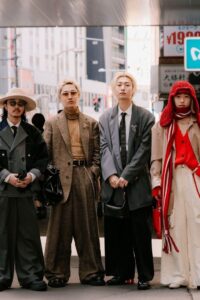
Determine the designs of Yohji Yamamoto and Rei Kawakubo, designers with Comme des Garçons.Despite not specific to streetwear, the overall look of the genre have been greatly influenced by their avant-garde styles. Their propensity to explore rules and reinvent silhouettes has shaped the next wave of streetwear designers that embrace daring experimentation and push limits.
Iconic Japanese Streetwear Brands
Several prominent brands on the Japanese streetwear scene have left an ongoing effect on global fashion. These are a few of the most renowned:
A Bathing Ape (BAPE): As previously stated, Japanese streetwear is frequently linked with BAPE. The company’s status as an important player in the world has been established by its affiliations with corporations like Pepsi, Adidas, and Supreme.
Undercover: Founded by Jun Takahashi, Undercover has become famous for its modern designs and punk-inspired appear. The brand frequently formulates a distinctive mix that appeals to a diverse demographic by integrating streetwear goals with high fashion.
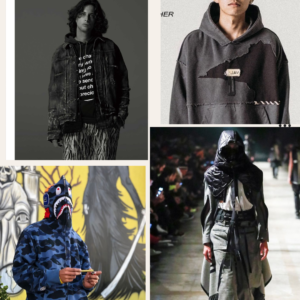
Neighborhood: Started by Shinsuke Takizawa, Neighborhood is strongly influenced by punk rock, motorcycle culture, and military aesthetic. It has become popular among streetwear those who are fans due to its tough yet gorgeous structure.
WTAPS: Also referred to as “double taps,” this business has become known for its highly embroidered apparel with military characteristics. A vital aspect of the Japanese design culture, “monozukuri,” or craftsmanship, is represented by WTAPS.
The Global Impact of Japanese Streetwear
Japanese streetwear influences designers, artists, and consumers around the world, making a major effect on global fashion. Collabo
rations between Japanese companies and other organizations are become more prevalent, illustrating the fact that Japanese design is everywhere.
For example, BAPE worked together with brands like Adidas and Supreme for manufacturing some of the most desirable items in the history of streetwear. The next wave of sneakerheads and collectors has additionally been influenced by Japanese sneaker culture, and they’re able to value the nation’s dedication to exclusivity and excellence.
Japanese streetwear has grown into growing in popularity because to social media, that allows people to communicate with one another return, and celebrate their chosen looks. Instagram and TikTok have changed into virtual the runways where Japanese streetwear is displayed highlighting the distinctive characteristics and innovation that indicate the style.
The Future of Japanese Streetwear
Japanese streetwear’s core principles of innovation, craftsmanship, and cultural significance are unchanging even as it grows more. By exploring with new materials, technologies, and design philosophies, young designers and companies are building upon the foundations laid down by pioneers such as Nigo and Jun Takahashi.
Furthermore, the business community is starting to put a lot of focus on sustainability. Slower production cycles, the integration of recycled materials, and environmentally friendly procedures are all receiving acceptance by Japanese streetwear brands. The alteration sustains the veracity and workmanship for which Japanese streetwear is well-known while simultaneously be lined up with the across the globe march towards more responsible fashion.
Conclusion
The power of creativity and cross-cultural collaboration can be seen by Japanese streetwear. It reflects the creative energy that distinguishes Japan, from the daring designs of BAPE to the futuristic appeal of techwear. In this colorful fashion movement, sneakers, culture, and functionality blend together to deliver an insight into the frequently evolving world of Japanese streetwear.
One thing remains clear as how Japan continues to inspire and effect worldwide fashion: Japanese streetwear is a permanent legacy that honors distinctiveness, craftsmanship, and the harmonious juxtaposition of tradition and contemporar

